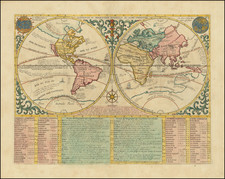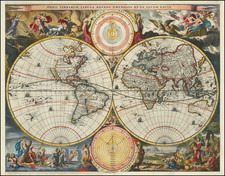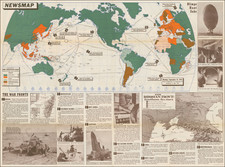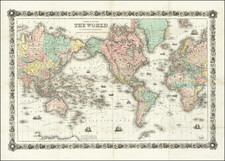The World As Known to Claudius Ptolemy
A nice example of the third and final state of Ruscelli's map of the ancient world, first published in Venice in 1561.
This map, titled Ptolemaei Cognita, is an exemplary representation of the ancient world as described by Claudius Ptolemy, a 2nd-century Alexandrian geographer and astronomer. This particular version was created by Girolamo Ruscelli, reflecting the Ptolemaic World projection that became prominent in the 15th century when Ptolemy's work was rediscovered and translated from Greek into Latin.
Ptolemy's Geographia was a groundbreaking work that compiled the geographical knowledge of the ancient world. It introduced the concepts of latitude and longitude and provided a systematic approach to mapping the world. The maps produced from Ptolemy's descriptions, such as this one, became highly influential during the Renaissance, guiding explorers and cartographers alike.
The map showcases the known world (oikoumene) of Ptolemy's time, stretching from the Atlantic Ocean in the west to the Indian subcontinent in the east, and from Scandinavia in the north to the deep interior of Africa. Key features include:
-
Closed Indian Ocean: One of the most distinctive aspects of Ptolemaic maps is the depiction of the Indian Ocean as an enclosed sea, surrounded by land. This reflects the limited exploration and understanding of the region during Ptolemy's era.
-
Ethiopia and Africa: The map labels regions such as Libya (Libya Interior) and Ethiopia, highlighting the ancient world's knowledge and misconceptions about the African continent. The depiction of rivers and mountains in these areas is based on ancient sources and travelers' accounts.
-
Europe and Asia: Major regions such as Scythia, Sarmatia, and the Asian interior are marked, showing a blend of factual knowledge and mythological elements. The Caspian Sea is depicted as an inland sea, another characteristic feature of Ptolemaic geography.
-
Middle East: The Arabian Peninsula is labeled with various regions such as Arabia Felix, Arabia Deserta, and Persia. The map shows significant ancient cities and trade routes, emphasizing the importance of this region in ancient geography.
Ruscelli's map is based on the early printed editions of Ptolemy's work first published in Bologna in 1477 and Rome in 1478, which in turn were derived from medieval manuscripts. The projection used in this map, with its trapezoidal frame and grid of coordinates, reflects the classical method of depicting the world, as inherited from Ptolemy. This style is both a historical artifact and a demonstration of the cartographic techniques that influenced Renaissance and early modern mapmaking.
Ptolemaei Cognita is a significant historical map that encapsulates the ancient world's geographical understanding as compiled by Claudius Ptolemy. Girolamo Ruscelli's rendition preserves the distinctive features of Ptolemaic cartography, such as the closed Indian Ocean and the detailed depiction of various regions. This map serves as an important link between ancient geographical knowledge and the cartographic advancements of the Renaissance, illustrating the enduring legacy of Ptolemy's work.
One of three maps of the world maps in Ruscelli's Atlas.
Girolamo Ruscelli (1500-1566) was a cartographer, humanist, and scholar from Tuscany. Ruscelli was a prominent writer and editor in his time, writing about a wide variety of topics including the works of Giovanni Boccaccio and Francesco Petrarch, Italian language, Italian poetry, medicine, alchemy, and militia. One of his most notable works was a translation of Ptolemy’s Geographia which was published posthumously.
There is limited information available about Ruscelli’s life. He was born in the Tuscan city of Viterbo to a family of modest means. He was educated at the University of Padua and moved between Rome and Naples until 1548, when he moved to Naples to work in a publishing house as a writer and proofreader. He remained in the city until his death in 1566.










![[Wall Map] Orbis Terrarum Nova et Accurata Tabula. Auct. G. Valck.](https://storage.googleapis.com/raremaps/img/small/41630dc.jpg)

![Западное Полушариіе | Восточное Полушаріе [Western Hemisphere | Eastern Hemisphere]](https://storage.googleapis.com/raremaps/img/small/82868.jpg)

